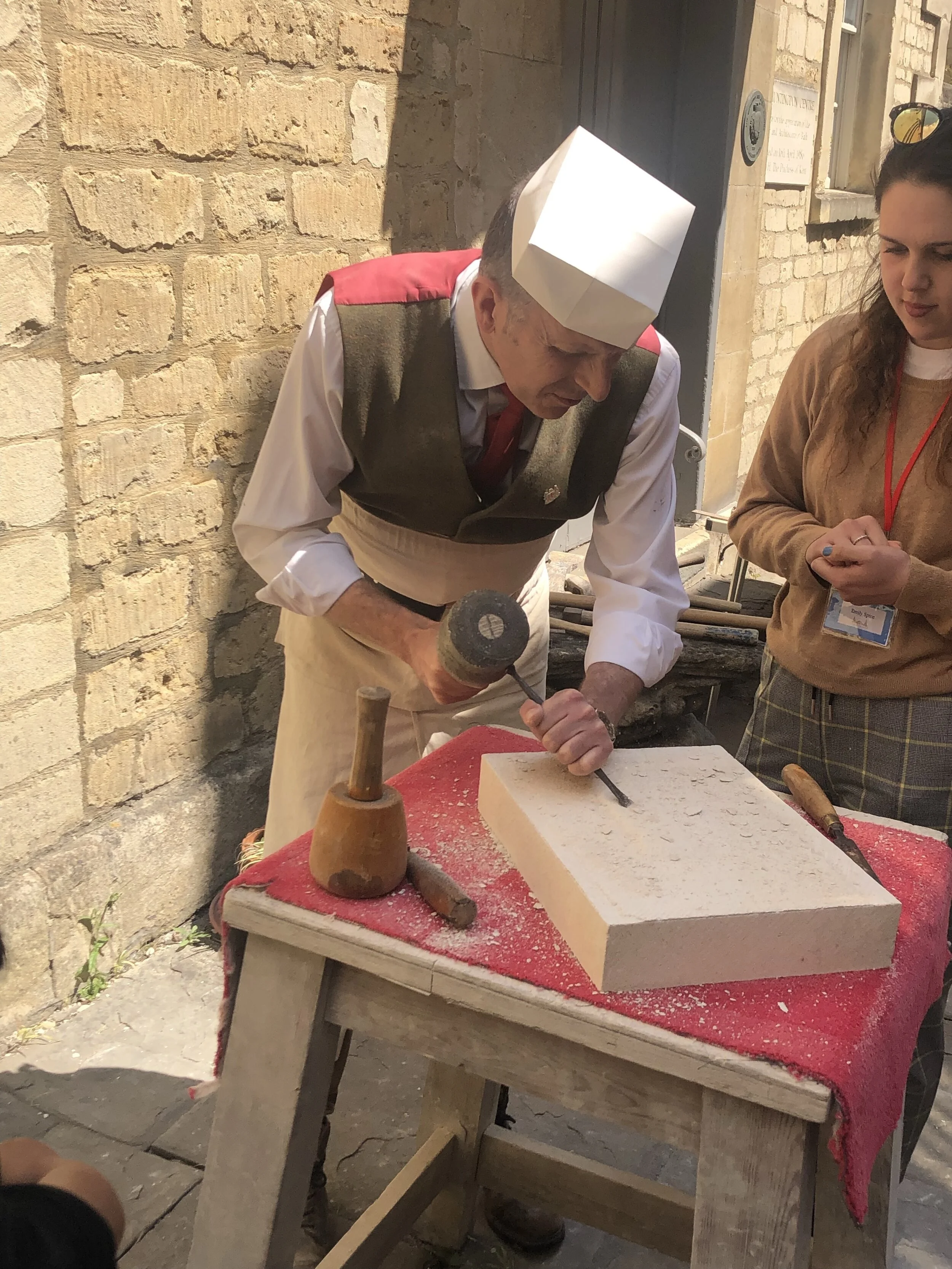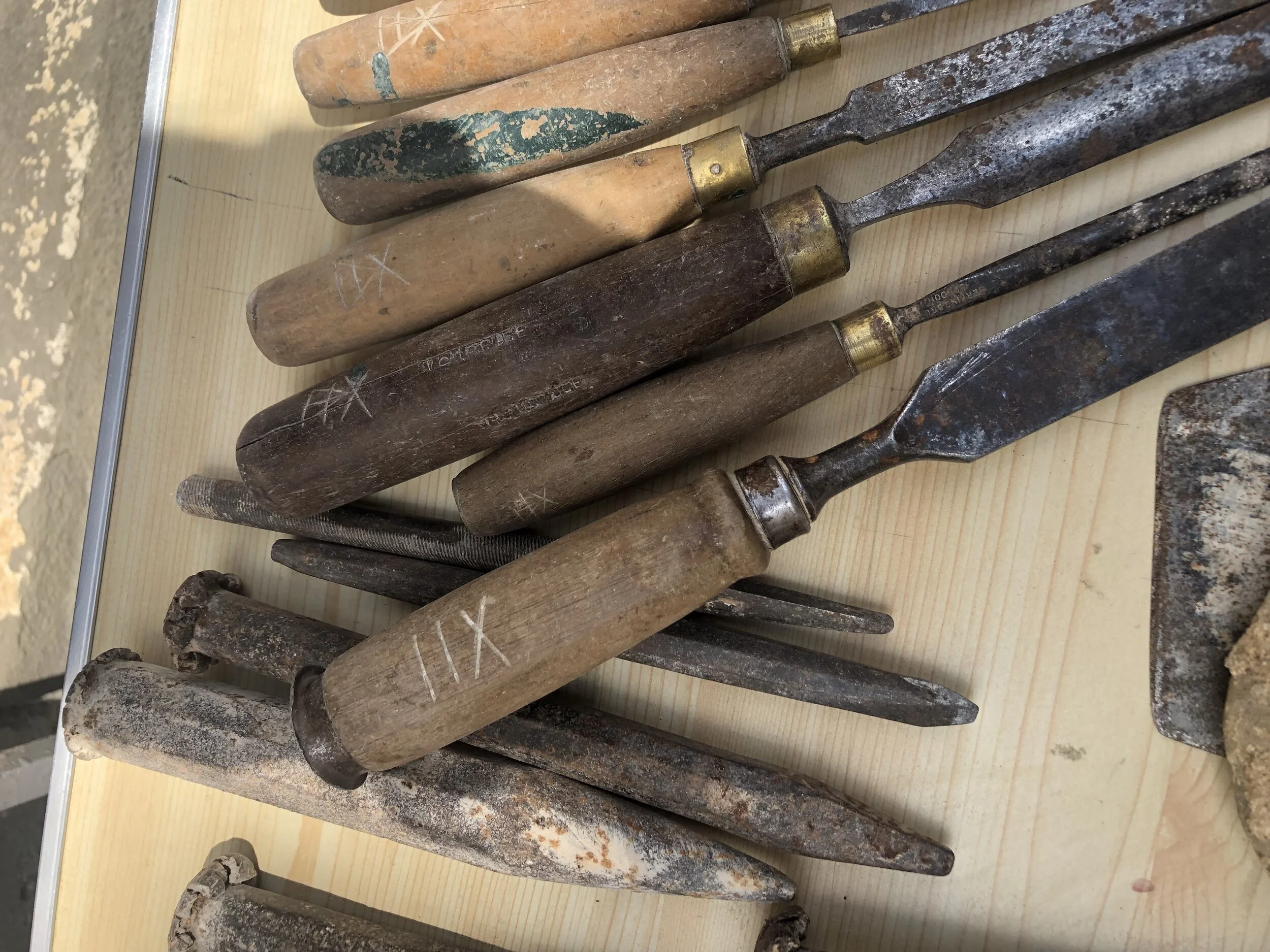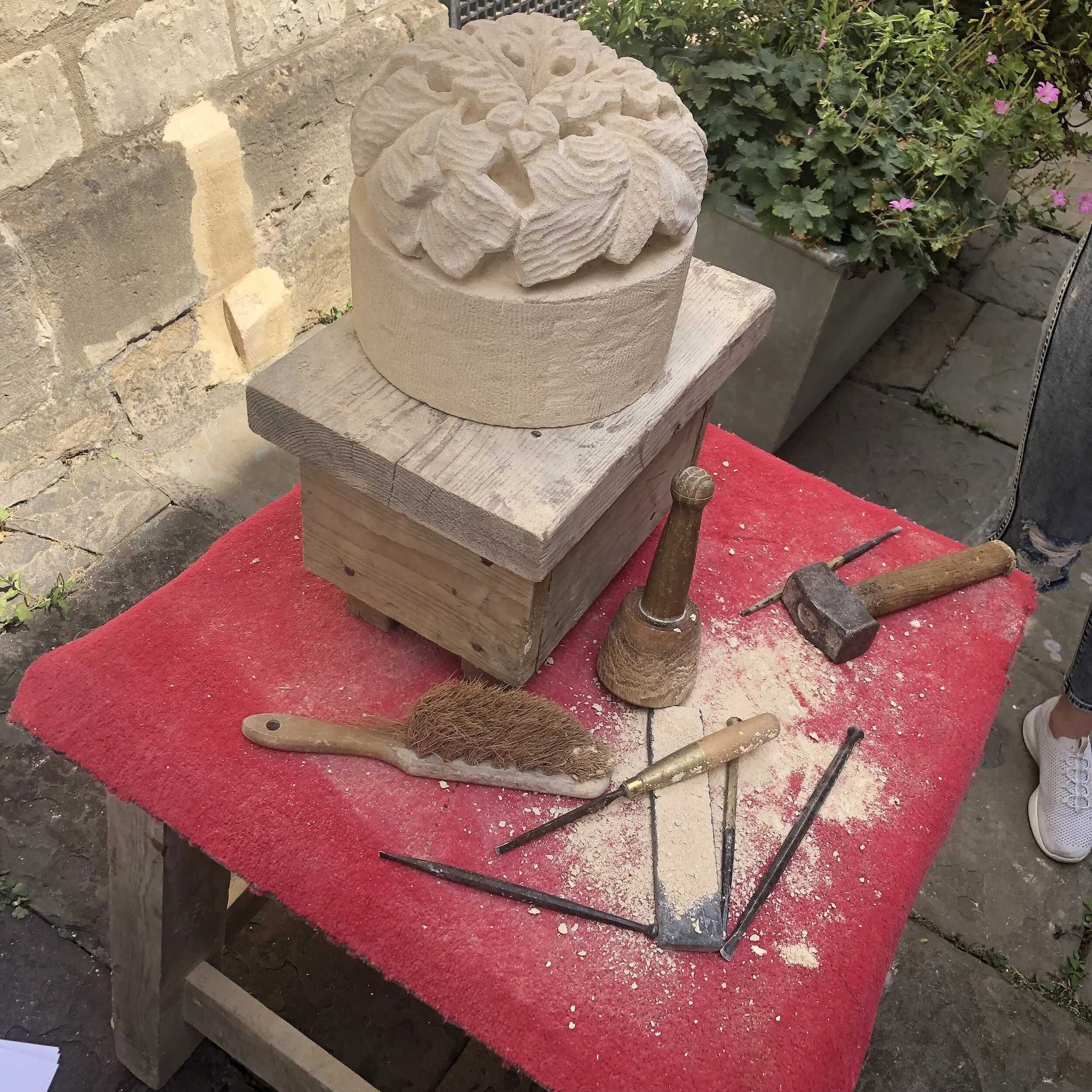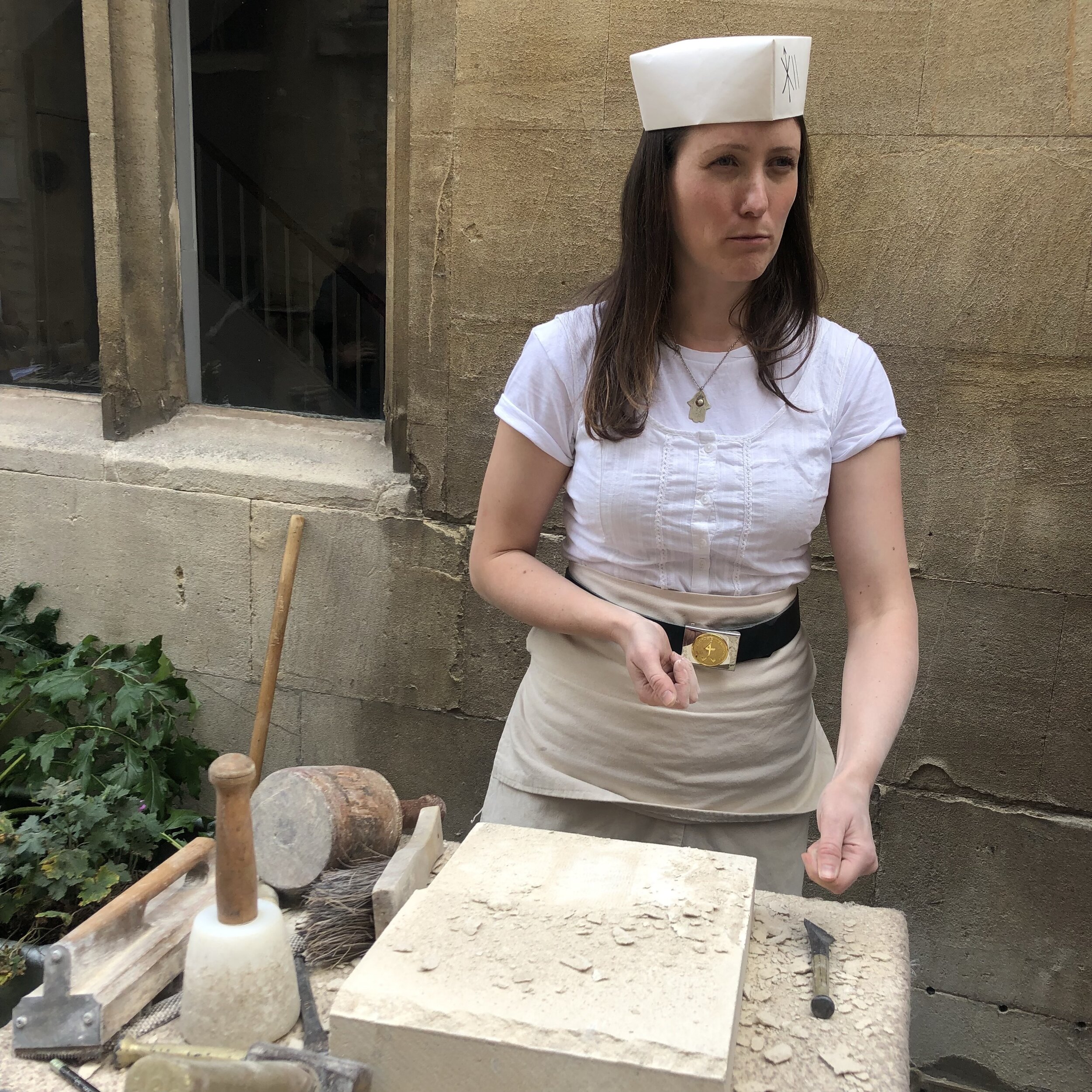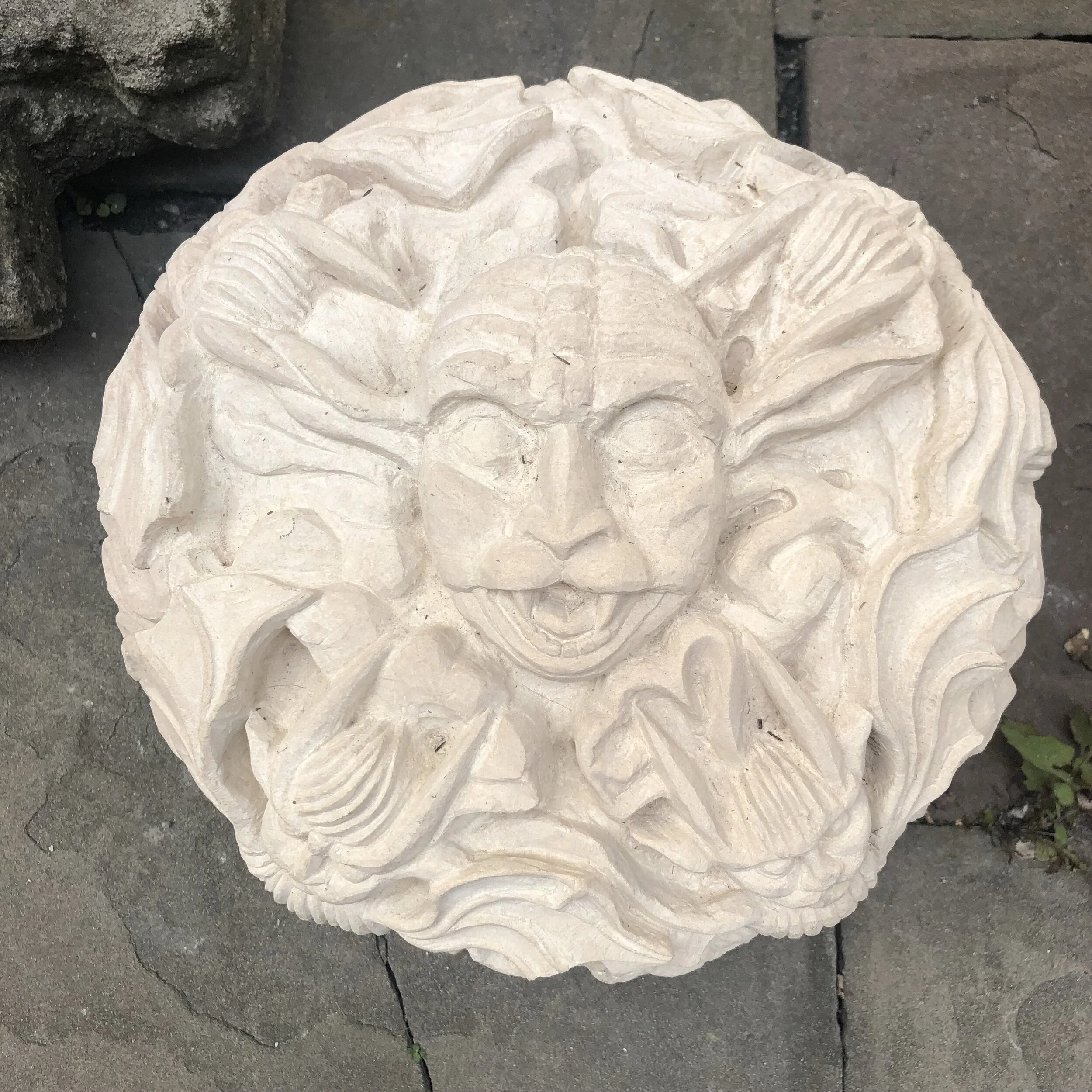OPP Day 3: Museum of Bath Architecture
Programs, Programs Programs!
Our visit to Museum of Bath Architecture, another site managed by the Bath Preservation Trust, was all about how to design engaging programs for a variety of audience types.
Designing engaging programs Is so important to museums and heritage sites. Many studies have shown that allowing visitors to engage in hands-on activities encourages learning by doing and reinforces knowledge read or taught using other methods. These kinds of activities also provide material for making memories and positive visitor experiences. Not only are visitors actively learning about a topic, but if they have a good experience, they may retain positive memories about the museum and continue to look to it for information and future visits.
At Museum of Bath Architecture, we were divided into small groups and given scenarios that outlined a group visit with profiles of visitors and the reasons why they were visiting. Our task was to design a half-day experience at the museum using learning outcome goals to guide our process. Group profiles included classrooms of children of different ages, senior citizens, adults who suffer from anxiety and depression, etc. The group that I was in designed a program for middle grades school children visiting on a field trip. We used grade level learning objectives to design a hands on activity that allowed children to learn about the different types of columns and capitals that they might see used in buildings around Bath, and how these architectural pieces came together to support buildings in different ways. Our activities involved a brief lesson with the curator and a chance to walk around the museum to see examples and learn about the process of making columns through the exhibits already installed at the museum. A hands-on activity would involve students working together to use different kinds of materials to build columns and capitals using specific instructions. A “roof” would then be placed to see how much of a load the columns could support. The exercise was meant to demonstrate how important it is to follow the directions so that each piece was uniform, as well as to see how different materials reacted to weight in different ways. The day would end with a walking tour and scavenger hunt through Bath City Center, where they could spend time looking at the Georgian buildings and trying to identify different building styles and components.
It was fascinating to see how other groups incorporated each scenario’s learning objectives and accomplished them. The greatest thing was that each group created a program that aside from staffing considerations, were overall very low budget and incorporated resources and objects already available at the museum. A little creativity can go a long way in creating meaningful experiences for people of all ages.
After our activity, we were treated to our own special program experience. Bath Preservation Trust arranged for us to have an interactive afternoon with the Stone Mason’s Guild of St. Stephen and St. George. We were given a brief lecture about the art of stone masonry and its importance to the city of Bath, where historically buildings have been built primarily of Limestone. The city’s designation as a UNESCO World Heritage City means that new construction must fall under very specific guidelines, as must any restoration or preservation work. Because of this, local artisans, craftsmen, and trades guilds have a steady stream of work as building projects require knowledge and skill held by these talented people using local materials.
We were able to learn about the Guild’s master, Stephen, told us about the history of his specific guild, and about the traditions that guide them in their work Their white paper hats are marked with symbols that explain what is essentially their personal guild lineage. Those who can read the marks understand their level (apprentice, master, etc.) and who trained them. The hats themselves are a reminder to keep good posture, as otherwise the hats will fall off. Good posture, Stephen reminded us, is essential to body health that will allow the masons to continue working for years to come. We were also shown tools that have been passed down through generations within this guild for hundreds of years. Again, each tool is marked with the special symbol of the person who uses it, just like their hats. The tools perhaps fascinated me the most. It’s incredible that just by looking at the handle of a single tool, you can see hundreds of years of its use and understand what an honor it is to be part of such an incredible legacy.
We were able to have a go at chipping away at limestone during the demonstration. I must say, I will never looked at hand worked stone architectural elements the same ever again!


